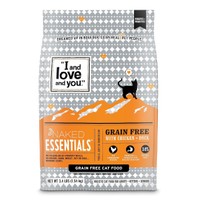It can be concerning when your cat suddenly refuses to eat dry food, especially if it’s a staple in their diet. Dry food offers affordability, longer shelf life, and suitability for puzzle feeders. However, if your cat stops eating completely, a vet visit is crucial to rule out underlying health issues like pancreatitis or dental disease. If your cat is selectively avoiding dry food, this guide, based on expert veterinary advice, will explore potential reasons and solutions to encourage them to eat kibble again.
Understanding Why Your Cat Won’t Eat Dry Food
First, determine if your cat is refusing only dry food or all food. A complete refusal warrants immediate veterinary attention. If it’s just the kibble, consider these factors:
1. Underlying Health Issues:
Several health conditions can decrease a cat’s appetite. These include dental problems, upset stomachs, infections, kidney disease, liver problems, or even cancer. A veterinarian can perform a thorough examination and suggest diagnostic tests like blood work to identify any potential health problems.
2. Behavioral Issues and Stress:
Stress and anxiety can significantly impact a cat’s eating habits. New pets, people, loud noises (fireworks), or a recent move can trigger stress. Identifying and mitigating the source of stress is key to restoring your cat’s appetite.
3. Texture and Kibble Size Preferences:
Kibble comes in various sizes, shapes, and textures. Some cats may prefer smaller kibble (like kitten food), while others might dislike the texture of dry food altogether. Cats are obligate carnivores, meaning they are biologically designed to eat meat, so they may naturally prefer moist, meaty foods over dry kibble.
4. Poor Diet Quality:
Always feed your cat a high-quality, complete, and balanced diet appropriate for their life stage (kitten, adult, senior). Lower-quality commercial diets may contain fewer meat-based ingredients, making them less palatable for your cat.
5. Fickle Eating Habits:
Cats are known for their finicky eating habits. What appeals to them one day might not the next. Some cats crave variety, while others prefer consistency. A recent change in brand, food bowl, or its location can also deter them. Also, excessive treats and table scraps can reduce their appetite for their regular kibble.
Is It Bad If My Cat Refuses Dry Food?
Dry food offers several advantages, including ease of measurement, reduced odor, and potential dental benefits (though studies are inconclusive; regular teeth brushing is still recommended). However, it’s not inherently bad if your cat won’t eat dry food, as long as they consume a complete and balanced diet, whether wet or dry. The primary focus should be maintaining a healthy weight and providing appropriate nutrition.
Why Does My Cat Eat Treats But Not Dry Food?
If your cat readily consumes treats but refuses dry food, they might feel unwell and only crave highly palatable foods. Alternatively, they might have learned to hold out for treats. Avoid overfeeding treats, as it can disrupt their appetite for their main meals and lead to nutritional imbalances.
Recognizing Food Aversion in Cats
Cats might sniff at their food bowl and walk away, or take a few bites before stopping if they dislike the food. If you notice a persistent lack of appetite, it’s essential to consult a veterinarian to rule out underlying health issues.
Strategies to Encourage Your Cat to Eat Dry Food
If you want to encourage your cat to eat dry food, consider these tips:
- Veterinary Check-up: Rule out dental or jaw pain, which can make eating dry food uncomfortable.
- Change Brands: Experiment with different high-quality cat food brands, focusing on varying kibble sizes and shapes.
- Moisten the Kibble: Soaking the kibble in warm water can soften it and enhance its meaty flavor.
- Fresh Food: Serve fresh kibble daily and store it in an airtight container to prevent staleness.
- Fresh Water: Ensure constant access to fresh water, as dry food diets can increase thirst.
Ultimately, if your cat prefers wet food over dry food but maintains a healthy weight, it’s generally not a cause for concern.
Expert advice from
